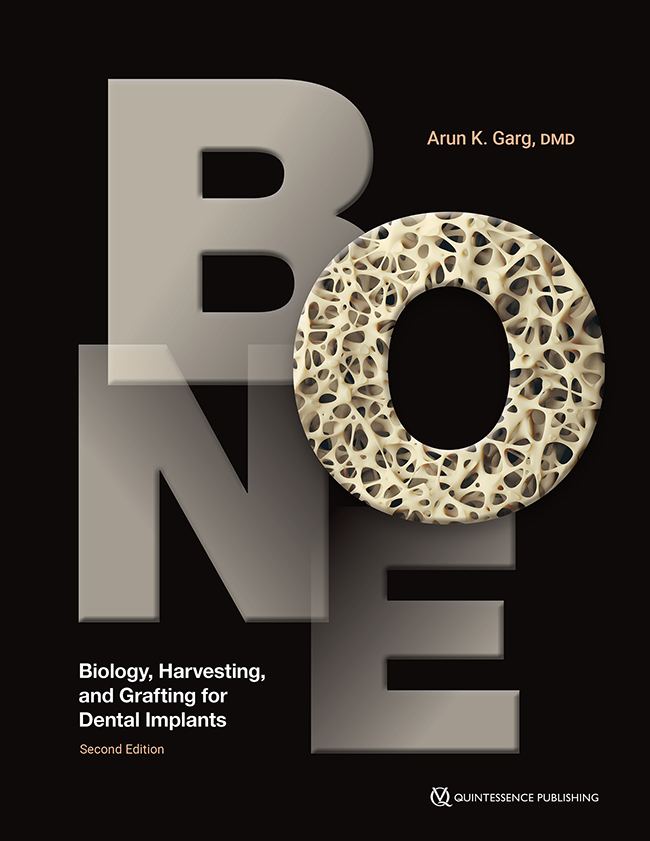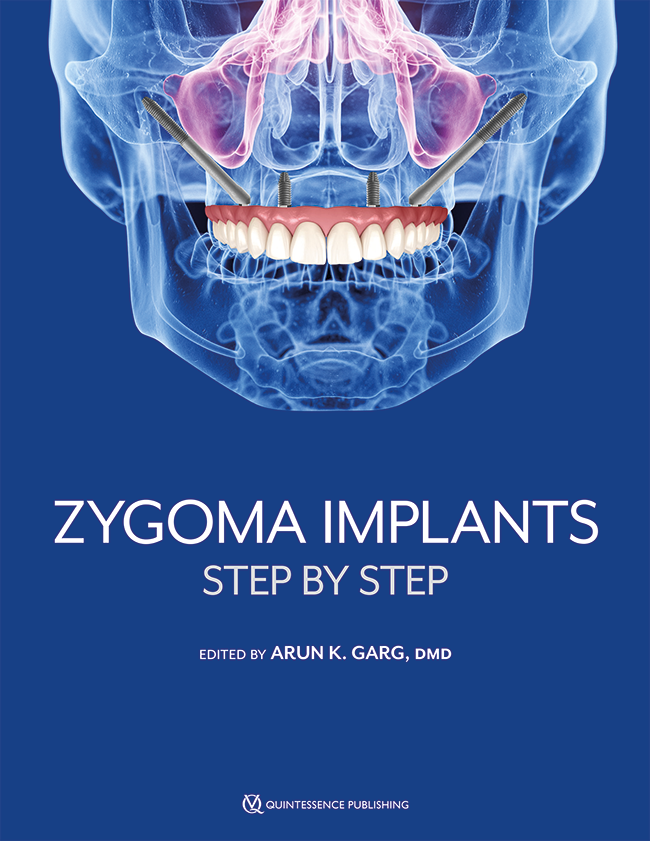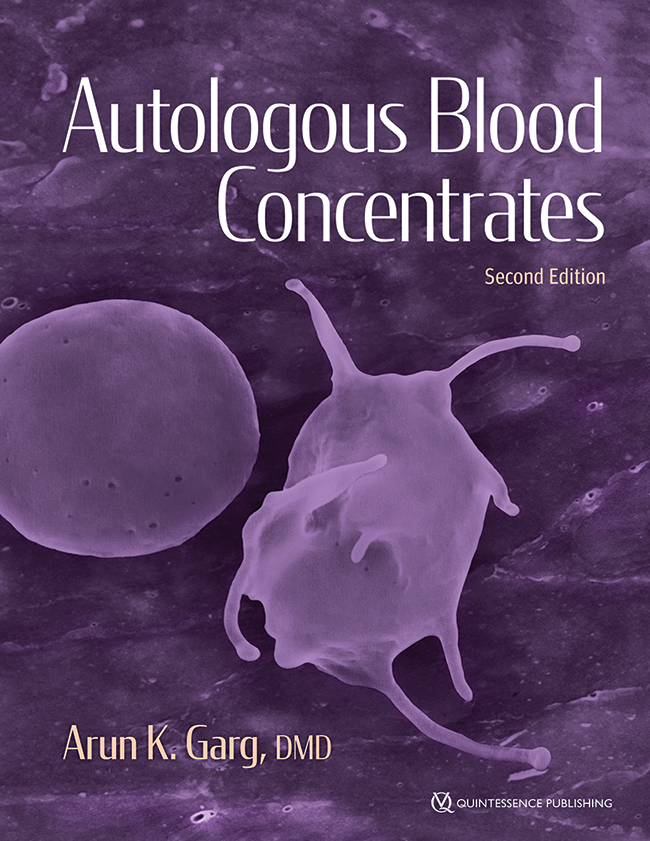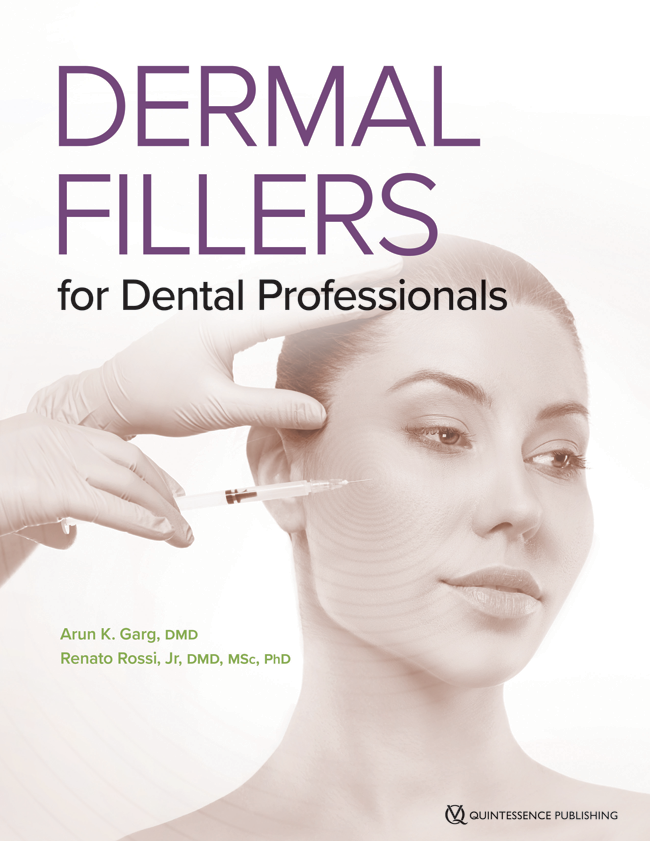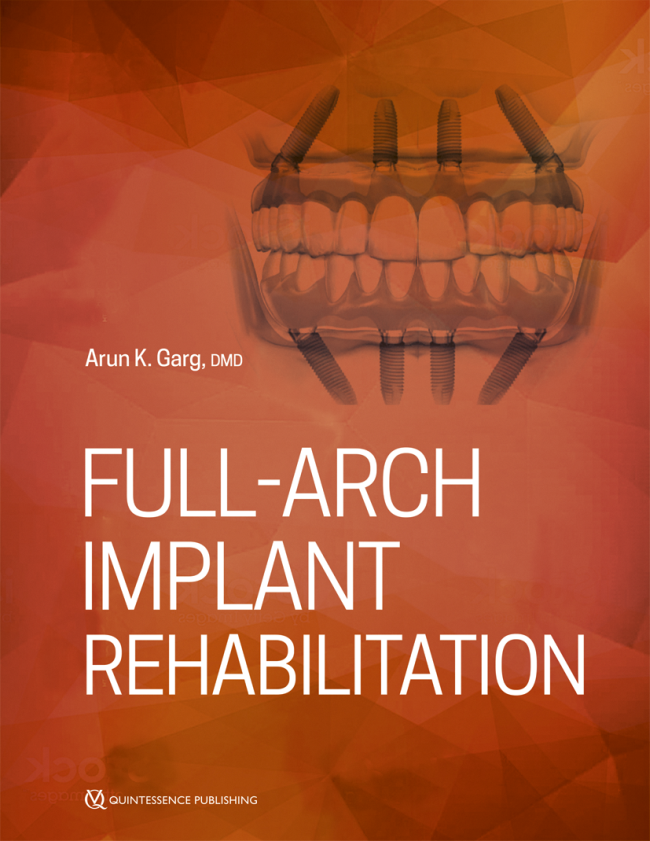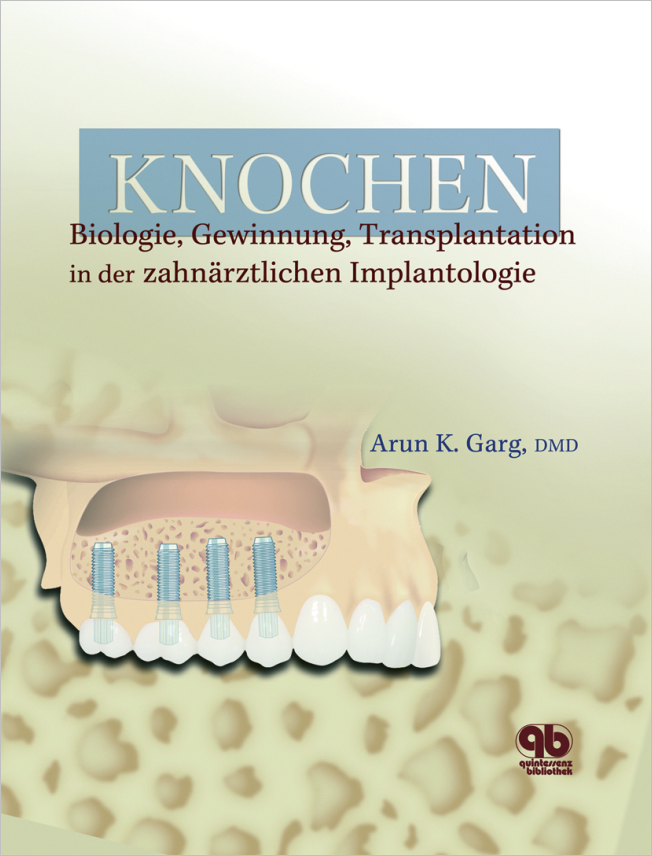The International Journal of Oral & Maxillofacial Implants, 4/2006
ID de PubMed (PMID): 16955605Páginas 551-559, Idioma: InglésPeleg, Michael / Garg, Arun K. / Mazor, ZivPurpose: Evidence suggests that smoking is detrimental to the survival of dental implants placed in grafted maxillary sinuses. Studies have shown that improving bone quantity and quality, using rough-surfaced implants, and practicing good oral hygiene may improve outcomes. In this prospective study, the long-term survival rates of implants placed simultaneously with sinus grafting in smokers and nonsmokers were compared.
Materials and Methods: Implants with roughened surfaces were immediately placed into maxillary sinus grafts in patients with 1 to 7 mm of residual bone. A total of 2,132 simultaneous implants were placed into the grafted sinuses of 226 smokers (627 implants) and 505 nonsmokers (1,505 implants). A majority of the patients received a composite graft consisting of 50% autogenous bone. In both smokers and nonsmokers, approximately two thirds of the implants had microtextured surfaces; the remainder had hydroxyapatite-coated surfaces. The implants were restored and monitored during clinical follow-up for up to 9 years.
Results: Cumulative survival of implants at 9 years was 97.9%. There were no statistically significant differences in implant failure rates between smokers and nonsmokers.
Discussion: Implant survival was believed to depend on the following aspects of the technique used: creation of a large buccal window to allow access to a large recipient site; use of composite grafts consisting of at least 50% autogenous bone; meticulous bone condensation; placement of long implants (ie, 15 mm); use of implants with hydroxyapatite-coated or microtextured surfaces; use of a membrane to cover the graft and implants; antibiotic use and strict oral hygiene; use of interim implants and restricted use of dentures; and adherence to a smoking cessation protocol. (Comparative Cohort Study)
Palabras clave: dental implants, sinus floor augmentation, smoking
The International Journal of Oral & Maxillofacial Implants, 1/2006
ID de PubMed (PMID): 16519187Páginas 94-102, Idioma: InglésPeleg, Michael / Garg, Arun K. / Mazor, ZivPurpose: One-stage implant placement in the grafted maxillary sinus has traditionally been limited to patients with at least 5 mm of residual bone to ensure complete implant stabilization. The aim of this prospective study was to determine the long-term survival rates of implants with roughened surfaces placed immediately into maxillary sinus grafts in patients with 1 to 5 mm of residual bone.
Materials and Methods: A total of 2,132 microtextured screw-type (n = 1,374) or hydroxyapatite-coated cylinder-type (n = 758) implants were immediately placed into the grafted sinuses of 731 patients. The implants were restored and monitored for up to 9 years of clinical follow-up.
Results: Cumulative survival at 9 years was 97.9% (n = 2,091 implants); 20.4% of the implants were placed in 1 to 2 mm of residual bone.
Discussion: Initial implant stability and parallelism were achieved through a combination of meticulous condensation of the particulate bone graft material around the implants, the frictional interface of the roughened implant surfaces and the host tissues, and selection of an appropriate graft material.
Conclusions: Simultaneous implant placement into sinus floor grafts can be a predictable treatment option for patients with at least 1 to 2 mm of vertical residual bone height when careful case planning and meticulous surgical techniques are used. (More than 50 references)
Palabras clave: bone graft, implants, sinus lift, subantral augmentation
The International Journal of Oral & Maxillofacial Implants, 1/2002
Páginas 101-106, Idioma: InglésPeleg, Michael / Mazor, Ziv / Chaushu, Gavriel / Garg, Arun K.Purpose: Several nerve repositioning techniques have ben presented in the literature, each with limitations. This article presents a new technique involving the use of 2 osteotomies, with minimizes particularly the potential duration of sensory disruption and the risk of nerve paresthesia and inadvertent nerve transection or compression.
Materials and Methods: Ten patients ranging in age from 47 to 67 years were selected for nerve lateralization utilizing the modified technique. A total of 23 cylindrical implants were placed. An average follow-up period was 29.8 months.
Results: Of the 10 patients, 4 experienced total return of sensation within 3 to 4 weeks. One patient experienced complete recovery at 6 weeks.
Discussion: Creating 2 osteotomies as described minimizes the chances for postoperative neuropraxia and nerve paresthesia or anesthesia.
Conclusion: When there is moderate-to-severe bone resorption of the mandible posterior to the mental foramen, repositioning the inferior alveolar nerve using both an anterior and postetrior osteotomy allows for more bone to accomodate ideal placement and greater length of implant.
Palabras clave: dental implants, inferior alveolar nerve, nerve repositioning, nerve transpositioning, neurosensory disturbance
The International Journal of Oral & Maxillofacial Implants, 2/2000
Páginas 287-290, Idioma: InglésGarg, Arun K. / Mugnolo, Gustavo M. / Sasken, HarveyParanasal sinus mucoceles are benign, locally expansile cystlike masses that are filled with mucus and lined with epithelium. Most occur in the frontal sinus. Maxillary sinus mucoceles are presumably uncommon in the United States and European countries, although they have been frequently reported in Japan, particularly following Caldwell-Luc surgery. Clinical symptoms may not appear for at least 10 years postoperatively. Chronic sinus inflammation and allergic disease are also common causes of paranasal mucoceles. This paper provides an overview of maxillary sinus mucoceles and presents a case study involving a 62-year-old Latin male whose asymptomatic maxillary sinus mucocele was not revealed until he presented for maxillary sinus grafting and implant placement.
Palabras clave: maxillary sinus, mucocele, postoperative maxillary cyst, sinus augmentation, surgical ciliated cyst
The International Journal of Oral & Maxillofacial Implants, 4/1999
Páginas 549-556, Idioma: InglésPeleg, Michael / Mazor, Ziv / Garg, Arun K.This study assessed the efficacy of augmentation grafting of the maxillary sinus with simultaneous placement of dental implants in patients with less than 5 mm of alveolar crestal bone height in the posterior maxilla prior to grafting, although the procedure has traditionally been contraindicated based on empirical data. A total of 160 hydroxyapatite-coated implants was placed into 63 grafted maxillary sinuses in 63 patients whose crestal bone height in this region ranged from 3 to 5 mm. Patients were followed for 2 to 4 years after the placement of definitive prostheses. There were no postoperative sinus complications. Following uncovering of the implants at 9 months after surgery, there was no clinical or radiographic evidence of crestal bone loss around the implants. Histologic examination of bone cores from the grafted sites revealed successful integration and a high degree of cellularity. All patients maintained stable implant prostheses during follow-up. These findings indicate that the single-step procedure is a feasible option for patients with as little as 3 mm of alveolar bone height prior to augmentation grafting, utilizing hydroxyapatite-coated implants and autogenous bone.
Palabras clave: atrophic maxilla, bone graft, dental implants, sinus augmentation, sinus mucosa
The International Journal of Oral & Maxillofacial Implants, 3/1999
Páginas 384-391, Idioma: InglésLeonardis, Dario De / Garg, Arun K. / Pecora, Gabriele E.During 1992, 100 Minimatic screw implants made of titanium alloy (titanium-aluminum-vanadium) with a machined rough acid-etched surface were placed in 63 consecutive partially edentulous patients. At second-stage surgery, which was performed after a 4- to 6-month healing period, none of the implants showed signs of mobility, peri-implant infection, or bone loss from the crest of the ridge. Each patient was restored with a fixed prosthesis and reexamined every 3 months during the first year. Periapical radiographs were taken annually up to 5 years. These revealed no signs of peri-implant radiolucencies involving any of the implants, and mean alveolar bone loss was less than 1 mm at the 5-year examination. One implant was considered a late failure because of a peri-implant infection that developed during the first year, although the implant was still functional at year 5. Another patient with 2 implants dropped out during the fifth year of the study, although both implants had been considered successful up to that point. Based on annual measurements of Plaque Index, Sulcular Bleeding Index, pocket probing depth, attachment level, width of keratinized mucosa, and hand-tested mobility, 97 of the remaining 98 implants were considered successful, resulting in a 98% success rate. This 5-year study confirms that Minimatic machined acid-etched implants provide predictable osseointegration results and supports the conclusion of other reports that titanium implants with a rough surface can fulfill the requirements of Albrektsson et al (1986) for implant success.
Palabras clave: acid-etched implants, five-year follow-up, osseointegration, rough surface implants





